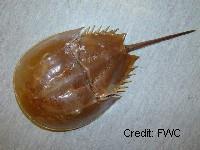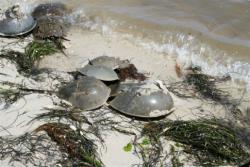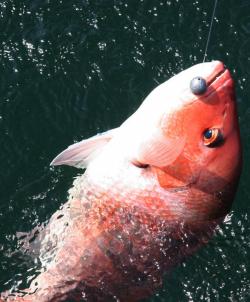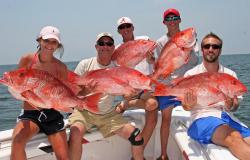B.A.S.S. Announces First-Ever High School All-American Team
BIRMINGHAM, AL. – Twelve high school students from 10 states have been selected as members of the first Bassmaster High School All-American Fishing Team.
Twelve high school students have been selected as members of the first Bassmaster High School All-American Fishing Team based on tournament performance, community service and recommendations from coaches and school officials.
“These 12 student anglers have a rare combination of fishing ability, leadership skills and involvement in community service projects,” said Hank Weldon, B.A.S.S. youth manager. “We believe they will continue to make an impact on their communities and the sport of fishing well into the future.”
The High School All-Americans were selected from a pool of 57 Bassmaster High School All-State anglers from 33 states. Judges reviewed tournament resumes, service activities and recommendations from coaches and school officials before making the selections. More than 200 nominations of student anglers in grades 10-12 were submitted for the inaugural All-American program.
Those earning the prestigious High School All-American title for 2015 are Laura Ann Foshee of Gardendale, Ala.; Zeke Gossett of Cropwell, Ala.; Joe Grafeman of Lake Ozark, Mo.; Dillon Harrell of Porter, Texas; Jake Lee of Knoxville, Tenn.; Julius Mazy of Phoenix, Ariz.; Carter McNeil of Abbeville, S.C.; Nick Montilino of Edina, Minn.; Jared Penton of Sanger, Texas; Cam Sterritt of Newfields, N.H.; Ryan Wood of Broomfield, Colo.; and Trevor Yates of Norman, Okla.
All have been invited to participate in a special Bassmaster High School All-American Bass Tournament being held in conjunction with BASSfest June 3-7 on Kentucky and Barkley lakes in Tennessee. Each high school angler will be paired with a Bassmaster Elite Series pro for the one-day tournament.
Here’s a look at what they did to become All-Americans:
Laura Ann Foshee, Alabama
A junior at Alabama’s Gardendale High School, Foshee is a founding member of the Gardendale Rockets Bass Fishing Club. She has a long list of tournament accomplishments, including a pair of victories.
Foshee helped create a benefit tournament to raise money for the Outdoor Ability Foundation, which provides hunting and fishing equipment to children with disabilities. She is also a member of Team Pink Fishing, which raises funds for breast cancer research. She assists with fish care in various tournaments, and she encourages other girls to enjoy fishing during an episode of the television show “Lunkerville.”
Zeke Gossett, Alabama
A senior at Pell City High School and member of the Pell City Panthers Bass Fishing Team, he has a 3.91 GPA and a tournament resume that includes a third-place finish in the 2014 Costa Bassmaster High School Classic, fourth in the 2014 Costa Bassmaster High School National Championship and qualification for the upcoming national championships for B.A.S.S. and TBF.
He’s a 12-time Alabama Bass Fishing State Champion and was named Alabama Sports Festival’s “Athlete of the Year” in 2010 out of 4,000 contestants in all sports. He was featured in Sports Illustrated’s “Faces In The Crowd Section” in 2011, and was commended for his bass fishing achievements in a bill introduced in the Alabama House of Representatives in 2012.
Gossett started dual-enrollment classes last year and has already completed four college courses, while also holding fishing seminars for junior fishing clubs and high school clubs.
Joe Grafeman, Missouri
Grafeman is a sophomore at Missouri’s School of the Osage. He and his partner won the 2014 Missouri State Championship and Missouri’s Junior Bassmaster tournament on Truman Lake in summer 2014. He is currently working to start a bass fishing team at his high school.
As a frequent volunteer at fishing shows and guest speaker at elementary schools, Grafeman uses his experiences to bring other young people to the sport of bass fishing. Those experiences include more than 20 Top 5 finishes in tournaments on the high school and adult levels.
Dillon Harrell, Texas
Harrell is a senior at New Caney High School in Porter, Texas, where he sports a 3.48 GPA. His incredible list of tournament accomplishments features more than 20 Top 5 finishes, including a wins in a TBF High School tournament and a SETX High School tournament in 2014.
The reigning SETX High School Fishing Angler of the Year, Harrell is president of his school’s fishing team, and he helped add a disability ramp to his local community mission. He also has participated in two roadside cleanups and recently received the New Caney FFA Star Lonestar Farmer Poultry Proficiency Award.
Jake Lee, Tennessee
A junior at Karns High School in Knoxville, where he maintains a 3.3 GPA, Lee and his partner won the 2014 Costa Bassmaster High School Open and the 2015 Norris Lake Bass Pro shops event.
Last year, Lee had a Top 20 finish in the 2014 Bassmaster High School National Championship on Kentucky Lake and a fourth-place finish in a TBF event in the fall. He works the sound room at Middlebrook Pike Baptist Church in Knoxville and helps the Sportsman Ministries program with a kids fishing day.
Julius Mazy, Arizona
Mazy, a sophomore at Arizona’s Boulder Creek High School, hopes to join the growing ranks of Western anglers who have succeeded as professionals. He’s had numerous first-place finishes during his young career, including one in the B.A.S.S. Nation High School Western Divisional on California’s Clear Lake in April.
Mazy and his teammates on the Phoenix High School Bassmasters organize local fun days to help younger kids enjoy fishing at local ponds. He’s also been active with the Cast for Kids program and with boat washes and raffle sales to raise money for his club.
Carter McNeil, South Carolina
McNeil is a senior at South Carolina’s Abbeville High School where he has a 3.2 GPA and is a member of the Abbeville Panthers fishing team.
He and his partner won the B.A.S.S. Nation High School Southern Divisional on the Pee Dee River in April and took third place in the 2015 Costa Bassmaster High School Classic Exhibition. McNeil is the founder and president of his fishing team and a frequent volunteer for Corps of Engineers projects aimed at planting aquatic vegetation on South Carolina’s Lake Russell.
He will be attending Bethel University on a fishing scholarship.
Nick Montilino, Minnesota
A senior at Edina High School, Montilino won the 2014 TBF state championship and was a runner-up in the B.A.S.S. state championship just two weeks later. He finished a remarkable 2014 season with wins in two more summer club events.
Montilino has participated in numerous lake and park cleanup efforts and has prepared meals for the underprivileged through his local hockey association and his church. He has a 3.6 GPA and has mentored younger bass fishermen from Minnesota youth organizations and at his high school.
Jared Penton, Texas
Penton is a senior at Sanger High School where he carries a 3.65 GPA. He won the Texas High School Bass Association Fun ‘n Sun Open in January 2014 and has several other Top 10 finishes to his credit.
He has served as president of the Sanger High School fishing team the past two years and does volunteer work for the Sanger Crisis Center, where he helps stock the food pantry for people in need. He also volunteered at the Toyota Texas Bass Classic Kids Casting Booth, helping younger anglers learn the basis of casting.
Cam Sterritt, New Hampshire
Sterritt has been a standout competitor since he was 12 years old. He won the 2007 New Hampshire Bassmaster CastingKids state championship for his age group and a slew of Junior Bassmaster titles over the years. He and his partner finished second among 60 teams in the 2014 Bassmaster High School National Championship on Kentucky Lake. He won the inaugural New Hampshire Interscholastic Athletic Association (NHIAA) High School Bass Fishing State Championship in 2013, as well as the NHIAA High School Qualifier for the state championship that year and the Angler of the Year title in 2014.
Sterritt, now a senior, founded the Exeter High School Blue Hawks Bass Fishing Team. He volunteers at Camp Carefree for children with diabetes, CastingKids competitions, cleanup projects at state parks and a fish tagging project for the New Hampshire Fish & Game agency.
Ryan Wood, Colorado
A senior at Legacy High School, Wood currently has a 4.0 grade average and is a member of the National Honor Society. Just last year, he won the prestigious Costa Bright Future Scholarship, which was presented at the 2014 Costa Bassmaster High School National Championship.
Wood has been successful at multiple levels of competition from Junior Bassmaster to high school tournaments and adult events. He won the 2013 Bassmaster Junior World Championship on the Arkansas River, finished third in the 2014 Costa Bassmaster High School National Championship, and then went on to win a Denver Bassmasters adult open at Horsetooth Reservoir. He was a charter member of his club, Front Range Bass Club, and presently serves as its president.
Wood has been a leader in conservation, helping his club earn a conservation grant to refurbish a pond in North Denver and volunteering with the Colorado Parks and Wildlife to assess the aquatic health of lakes, ponds and streams in his state. Wood has participated in church mission trips, volunteered at kids’ derbies and organized backpacks and school supplies for a charity in his hometown.
Trevor Yates, Oklahoma
Yates is an active leader at Little Axe High School, where he is a senior. He has been involved in the student council for the past four years and is a member of the Business Professionals of America.
He has several high school wins to his credit, including the Oklahoma B.A.S.S. Nation High School State Championship and the TBF High School Southern Conference Championship, both in fall 2014. Yates also won the 2013 Junior Bassmaster World Championship alongside his All-American teammate, Ryan Wood.
Yates hosted a fishing clinic in 2014 for kids, showing them how to cast and other fundamentals of fishing. He helped the North OKC Junior Bassmasters assemble and place habitat in Oklahoma lakes. Yates formed the Little Axe Bass Club at his school and encourages kids to get into fishing by helping at local CastingKids competitions.
About B.A.S.S.
B.A.S.S. is the worldwide authority on bass fishing and keeper of the culture of the sport. Headquartered in Birmingham, Ala., the 500,000-member organization’s fully integrated media platforms include the industry’s leading magazines (Bassmaster and B.A.S.S. Times), website (Bassmaster.com), television show (The Bassmasters on ESPN2), social media programs and events. For more than 45 years, B.A.S.S. has been dedicated to access, conservation and youth fishing.
The Bassmaster Tournament Trail includes the most prestigious events at each level of competition, including the Bassmaster Elite Series, Bass Pro Shops Bassmaster Open Series presented by Allstate, Old Milwaukee B.A.S.S. Nation events, Carhartt Bassmaster College Series presented by Bass Pro Shops, Costa Bassmaster High School Series, Toyota Bonus Bucks Bassmaster Team Championship and the ultimate celebration of competitive fishing, the GEICO Bassmaster Classic presented by GoPro.







